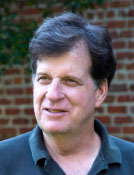 |
||||||||

“Scoop That Poop” Now Playing On a Computer Near You
 Proving that they’ll leave no communication tool untapped in the campaign to promote proper disposal of pet waste, the Tampa Bay Estuary Program has posted a new video called “Scoop That Poop!” on YouTube.
Proving that they’ll leave no communication tool untapped in the campaign to promote proper disposal of pet waste, the Tampa Bay Estuary Program has posted a new video called “Scoop That Poop!” on YouTube.
“It’s a fun way to remind people that a little dog poop is not ‘fertilizing the lawn,’ it’s poisoning Tampa Bay,” notes Nanette O’Hara, TBEP public outreach coordinator. “One dog may leave just a little pile, but when you multiply it by the 500,000 dogs living in the Tampa Bay area, you get 125 tons of dog poop per day.”
Studies show that less than half of dog owners clean up behind their dogs, so about 50 tons of dog poop is left to wash into creeks, rivers, lakes and Tampa Bay every day. Just one ounce of dog poop contains 23 million microorganisms of fecal coliform bacteria – and about 95% of the disease-causing coliform bacteria found in urban watersheds comes from animals.
Dog feces also contain high levels of nutrients. In excess in an underwater environment, those nutrients can fuel the growth of algae that clouds the water and prevents seagrasses from receiving the sunlight they need to grow.
To see the video, visit www.youtube.com and search for Scoop that Poop. For more information on the problems caused by dog poop in Tampa Bay, visit www.tbep.org.
Could Algae, Not Asteroids, Have Made Dinosaurs Extinct?
 Research published by two Clemson University professors indicates that an overgrowth of toxic blue-green algae may have caused mass extinctions – including those of
dinosaurs – millions of years ago.
Research published by two Clemson University professors indicates that an overgrowth of toxic blue-green algae may have caused mass extinctions – including those of
dinosaurs – millions of years ago.
 Writing in the peer-reviewed Environmental Geosciences journal, James Castle and John Rodgers claim that the evidence shows that the signs of mass extinction “occurred more gradually than expected if caused solely by a catastrophic event.”
Writing in the peer-reviewed Environmental Geosciences journal, James Castle and John Rodgers claim that the evidence shows that the signs of mass extinction “occurred more gradually than expected if caused solely by a catastrophic event.”
Of more immediate concern, the scientists also say that evidence shows that current environmental conditions are similar to those present when the extinctions occurred. Toxic algae populations are increasing and their geographic distribution is expanding, they report.
EPA Requests Peer Review Of Coastal Nutrient Criteria
The US Environmental Protection Agency has asked its Science Advisory Board for a peer review of the methods used to determine numerical limits on nutrients in estuarine and coastal waters. The schedule for completion has been delayed 10 months with a review set for October 2010 and finalized criteria to be complete in August 2012.
Numeric nutrient criteria for lakes, flowing waters and springs, which already have been peer reviewed, are still expected to be finalized in October 2010.
The numeric criteria would replace the less-specific narrative limits in current state law. As drafted, the rules would override the successful initiatives created by local governments and industries working through the Tampa Bay Estuary Program’s Nitrogen Management Consortium. Some experts predict that even the most pristine state waters would not meet the proposed standards.
For more information, visit www.epa.gov/waterscience/standards/rules/florida/ or see related stories in the April 2010 issue of Bay Soundings at www.baysoundings.com.
Local Scientist Named to International Panel
 Abby Sallenger, an oceanographer with the US Geological Survey’s St. Petersburg office, has been named as a lead author in the Fifth Assessment Report of the Intergovernmental Panel on Climate Change (IPCC). He’ll co-author a chapter assessing international climate change impacts, adaptation and vulnerabilities in coastal systems and low-lying areas.
Abby Sallenger, an oceanographer with the US Geological Survey’s St. Petersburg office, has been named as a lead author in the Fifth Assessment Report of the Intergovernmental Panel on Climate Change (IPCC). He’ll co-author a chapter assessing international climate change impacts, adaptation and vulnerabilities in coastal systems and low-lying areas.
Sallenger leads the USGS National Assessment of Coastal Change Hazards, which investigates how coastal environments, such as barrier islands, sand dunes, beaches and cliffs, change over the long term and during extreme storms. His research has recently focused on the processes forcing changes to barrier islands in Louisiana where rapid land subsidence simulates the long-term sea level rise that could impact the world’s coasts in the next century.
The IPCC is a joint project of the United Nations Environment Programme and the World Meteorological Organization. The report is expected to be published in 2014.
UF Looks at Native Pollinators
Honey bees – which came to the US from Europe with early settlers – are the key players in pollinating more than 30% of the world’s food crops. But as honey bee populations decline for reasons yet to be determined, researchers at the University of Florida are taking a closer look at native pollinators.
A five-year study, part of an effort called Operation Pollinator with partners in Michigan and California, is underway on a field outside Gainesville. Scientists are counting native pollinators in test plots filled with combinations of native perennial and annual wildflowers to see what works best to attract native bees and other pollinators.
“There are about 4,000 bee species in North America, 316 of them in Florida,” said Akers Pence, a postdoctoral researcher directing the UF portion of the study. “We can only recognize maybe two or three of them in flight. So getting a chance to study them, up close, is great.”
Knowing what habitat is best suited for native pollinators will make it possible for agricultural producers and even backyard gardeners to plant those types of flower mixes and encourage the native bees to visit and linger.
“Watch the Weather, Wait to Water”
Southwest Florida Water Management District has kicked off a campaign encouraging residents who irrigate their lawns to “watch the weather, wait to water” during the summer rainy season.
According to research by the University of Florida, an average of three-quarters of an inch of water every three to five days is enough for grass even during hot summer months. If lawns are receiving enough water from rainfall, SWFWMD is asking residents to operate their irrigation systems manually and turn them on only as needed.
Automatic shutoff devices, such as rain sensors, are required by Florida law. Check them regularly to ensure that they are working properly and set them so that irrigation is interrupted after three-quarters of an inch of rain.
Along with the automatic shutoff device, check to make sure the rest of the system is working properly.
On your irrigation day, manually start the system zone by zone to check for leaks, broken pipes, damaged or tilted sprinkler heads, blocked sprinkler patterns and overspray onto surfaces such as roads and sidewalks.
- Watch for soft, wet spots around sprinkler heads that could indicate a leak.
- Look for dry spots in your lawn that could be a sign of broken sprinkler heads, sprinkler patterns blocked by overgrown grass or shrubs, or clogged screens inside the sprinkler head.
- Adjust or add sprinkler heads if your current sprinklers do not spray water 80 to 100% of the distance to the adjacent sprinkler.
For additional information, visit WaterMatters.org/watchtheweather or the University of Florida’s Institute of Food and Agricultural Sciences Extension at http://fyn.ifas.ufl.edu.
